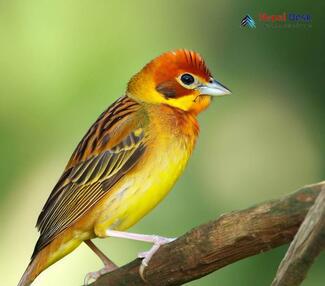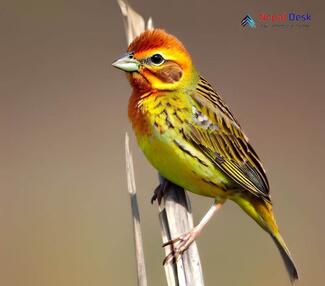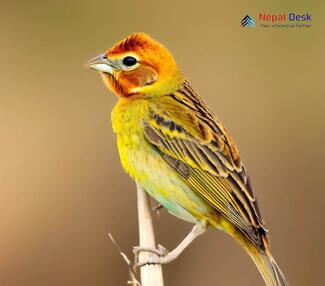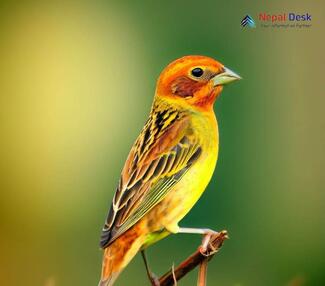Red-headed Buntings are captivating bird species known for their vibrant coloration and fascinating behaviors. This article delves into their taxonomy, physical features, habitats, diet, and presence in Nepal, and shares some intriguing aspects of these beautiful birds.
Taxonomy
The Red-headed Bunting (Emberiza bruniceps) belongs to the Emberizidae family of birds under the Passeriformes order. Within this scientific classification system, the Red-headed Bunting is most closely related to other species within the Emberiza genera which includes various bunting species that are also known for their striking appearances.
Physical Features
Red-headed Buntings are small-sized birds typically measuring around 14-16 cm in length and weighing between 18-25 grams. The male is adorned with a brilliant red head and neck which transitions to a bright yellow body in their breeding plumage. A black and brown pattern adorns their back while their tail feathers are predominantly black. During the non-breeding season, the males molt into a less vibrant plumage resembling that of the female buntings. The females sport more subdued shades of brown on both upperparts and underparts with streaks on their back.
Habitat
These attractive buntings prefer open grasslands, farmlands, and scrubby areas as their primary habitat. They can be found perching on bushes or posts while searching for food or engaging in their melodic song. Apart from Nepal, Red-headed Buntings have a widespread distribution that extends from eastern Europe to western Asia.
Diet
The diet of Red-headed Buntings mainly comprises seeds from grasses and other plants. Insects play an important role in their diet during the breeding season when they require higher protein intake for healthy offspring development. Caterpillars, beetles, and other insects provide an essential source of nourishment for both the adults and their rapidly growing young.
Presence in Nepal
In Nepal, Red-headed Buntings are mainly found in the lowlands of the Terai region. They are migratory birds that arrive in Nepal during the breeding season which spans from April to September. During this time, they can be spotted in their splendid breeding plumage, making them a popular sighting for both local and visiting bird enthusiasts.
Interesting Point:
One fascinating aspect of Red-headed Buntings is their vocal ability. Males possess a rich, melodic song which is primarily used to establish territories and attract mates during breeding season. These territorial calls can be heard echoing across meadows and farmlands alike during the early mornings and late evenings – a delightful serenade to those fortunate enough to witness them.
In conclusion, the Red-headed Bunting is a charming species that never fails to captivate birdwatchers and nature enthusiasts with its stunning appearance and melodious song. As we learn more about these enchanting creatures, we are further reminded of the importance of preserving not just their habitat but also that of other fauna that contributes to our planet's incredible biodiversity.




